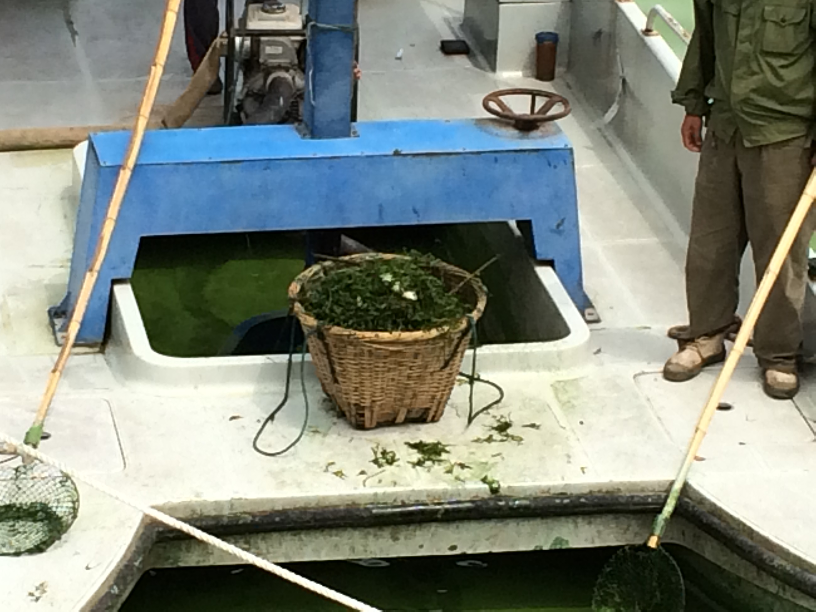|
It isn't easy being green. - Kermit the Frog
Algae Blooms - Threat and Solution

Threat
Algae blooms are growing in number, size and duration worldwide. This results from a number of factors.
Climate change is warming the waters where the algae grows.
Algae is beginning to appear in Arctic waters in larger volumes (2013).
Increasing amounts of phosphates
being washed into waterways and standing bodies of water due to detergents and
industrial-scale use of fertilizers for agriculture.
Increased numbers of
concentrated animal feeding operations (CAFO), or large-scale monoculture
livestock properties, creating concentrated sources of animal waste, which eventually finds its way into waterways.
Stronger storm systems deliver more rain in a short period of time,
which overwhelms municipal storm water systems (combined storm/sanitary pipes), flushing untreated human
waste and higher amounts of nutrients into waterways.
Why is this an issue? Because algae blooms, in addition to being unsightly and smelly, create other problems.
Some types of algae contain toxins - bad for recreational use of the body of water.
Algae consumes oxygen from the water column below it at night. When the bloom dies,
it is [dead link: http://www.nccwep.org/stormwater/effects/algae_blooms.php] deleterious to other marine life
because it may take months for the oxygen levels in the water to recover after
an algae bloom. The bloom also produces carbon dioxide, a greenhouse gas, when it dies or there is insufficient
light for photosynthesis. As the warming climate is one of the causal factors for algae blooms, this is becoming
a self-perpetuating and increasing loop.
The fish population, or even aquatic weeds, in the area may be needed as a food source for the local population.
When the algae dies and sinks to the bottom, the anaerobic decomposition produces methane, a
more potent greenhouse gas than carbon dioxide.
Algae decomposition
leads to elevated levels of methane production. In the net cycle, submerged decomposition of algae blooms
actually contributes more CO2e greenhouse gases.
With a lot of effort, which generally does not seem to be forthcoming from any levels of government,
the agriculture sector or the fertilizer industry, we could reduce the impacts by the sources listed above.
Even so, the effects will take decades to take effect as phosphates and nitrogen have leached into lake beds over a
period of years.
In the short term, people have tried scooping up the algae blooms to remove them, in order to reduce
eutrophication of the water and fish die-off. However, the aquatic weed harvesters and nets generally
used for this purpose are not very effective or efficient for the job. Even fine nets and conveyor belts
designed for harvesting aquatic weeds tend to pick up only a portion of the algae they encounter,
especially 'green soup' microalgae, unless you wait for the algae to develop into thick mats.

The nets pick up weeds, but not the algae slime (visible on the water surface in the deck opening)
If you'll excuse the phrase, the problem is growing.
The 2011 Lake Erie bloom is one example.
Here's a recent piece (2022) from Sweden.
|

